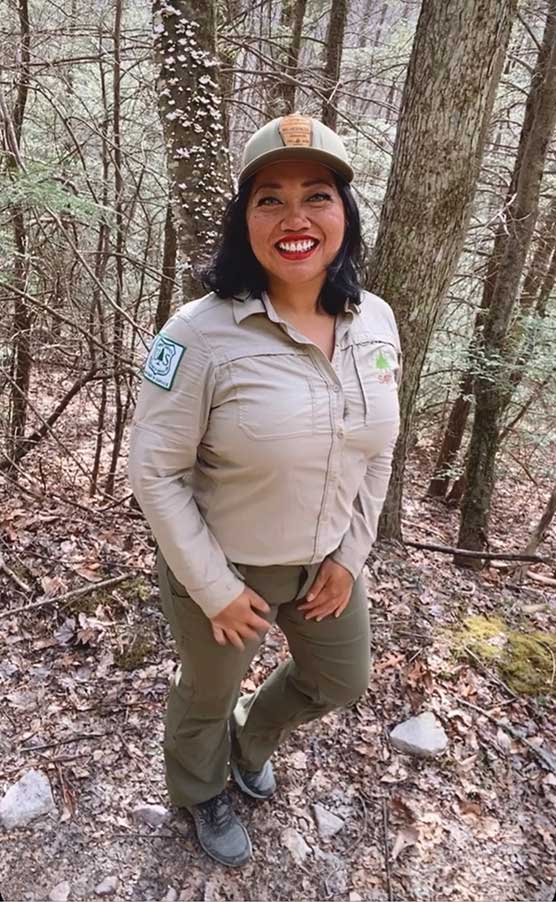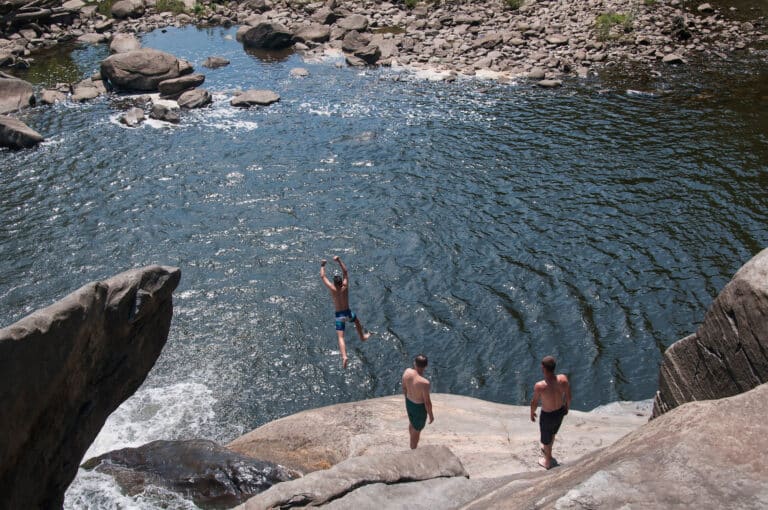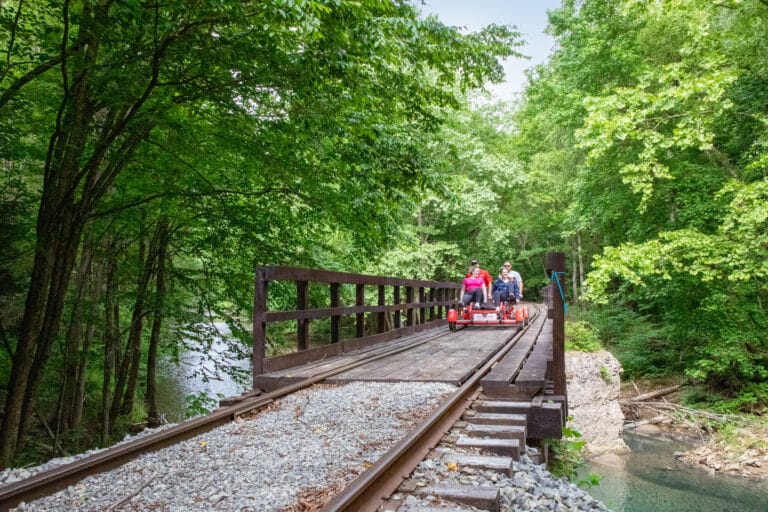Welcome to the Job Board, where Blue Ridge Outdoors goes behind the scenes with outdoor industry professionals on how they got the job, their daily routine, and more. This month: Wilderness Specialist.
From invasive species removal and habitat restoration to mapping for UPS, leading yoga sessions for people with special needs, and organizing volunteers for nonprofits, wilderness specialist Kathleen Pangan has done a little bit of everything over the last two decades.
In her most recent role, Pangan spent a year as a wilderness specialist with Southern Appalachian Wilderness Stewards (SAWS). Working in the Mount Rogers National Recreation Area of Virginia’s Jefferson National Forest, which includes four wilderness areas, she spent her time monitoring recreation sites, organizing data, connecting with specialists, and writing reports. “I think the reason I liked UPS so much was there was a breadth of tasks,” Pangan said. “The combination of fieldwork, computer analysis, and outreach is what appealed to me.”
But Pangan’s main duties were evaluating her assigned area in accordance with the Wilderness Act of 1964, which created the highest form of legal protection for designated public lands, intending to completely preserve their natural, undisturbed character. “There should be a place where you can feel like it’s just you and nature,” Pangan said.
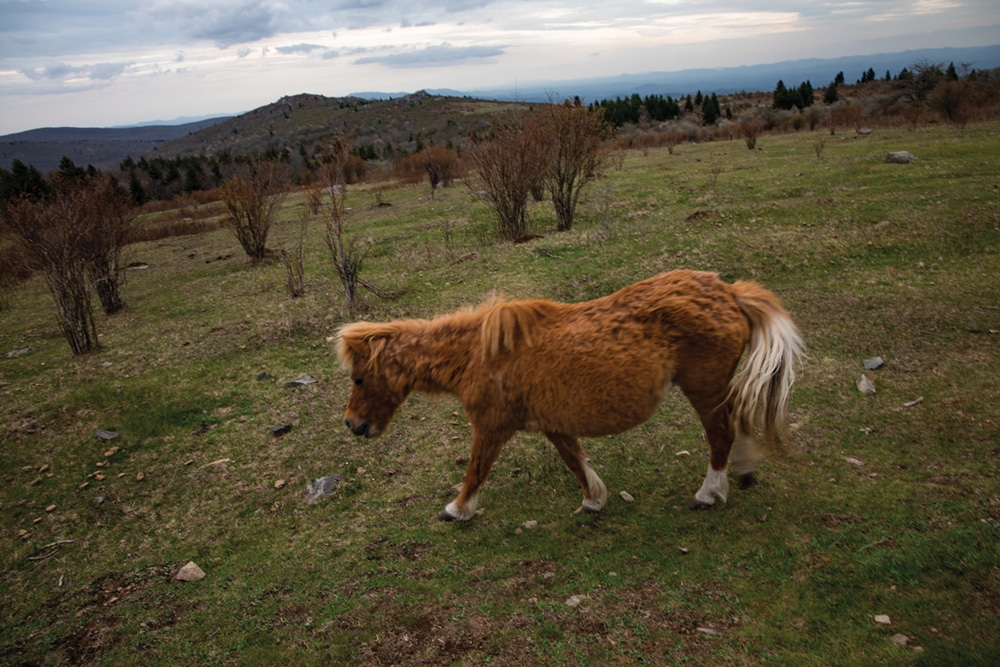
BRO: What did your day to day look like as a wilderness specialist?
KP: It depends on what the needs of the district are. For my position, it’s more time management for seasons. At the beginning of my season last June, I walked all the trails and scouted to make sure I knew where all of the blow downs were. In wildernesses, you can’t use mechanical tools like a chainsaw. So you have to use an axe or cross cut in order to take these trees that have fallen into our paths to put them aside. I hosted the trail crew team and showed them where they were at because I’m more familiar with the area.
In the fall, I managed my time so that I would be able to walk all trails in all the wildernesses and look for recreation sights. I recorded all of them using a tablet and put them on a map. This is for management to be able to see how many people are coming, how popular a place is, if there’s trash, are the trees getting chopped down, is the ground eroded and trampled.
Throughout the winter and into spring, that is when we’re researching and doing our reports. The report summaries and narratives are kind of like storytelling. Why is this wilderness special, and what are the parts of it that you can’t measure with numbers? At Mount Rogers, I have been working on the baseline assessment, which is more straight up numbers and technical. This requires me to research with all the specialists at the district level, the forest level, and sometimes the regional level. I’m contacting the biologist because she would know what plants or animals are in this area. Then I’m talking to the fire manager and asking him did you do any prescribed burns near the wilderness? In my forest, I was also talking to the hydrologist because she would know about impaired water and the watershed nutrition class. At the regional level, there are air experts who would know about nitrogen, sulfur, and ozone. I gather all the data and talk to the specialists until I understand it and then write about it.
What was one of your favorite aspects of the job?
When the trail crew came back in the fall. Seeing other humans in person and knowing that we were all doing this sort of almost simple task of clearing trees out of the trail, there’s something almost pure about it. I really enjoy technical report writing but sometimes it gets a little cerebral. I think having this balance of being in nature, clearing trails so that people can walk is a really nice counterpart to this report writing that is mainly for future land managers.
What are some of the benefits of a temporary position like this?
A seasonal position like this year as a wilderness specialist is a fantastic introduction to the Forest Service and wilderness work, which can allow you to see if you enjoy the work and find it fulfilling as well as feel the culture of the workplace. The other benefit is if you don’t have a background in land management or technical report writing, the season gives an amazing comprehensive experience for independent research, field work, technical writing, and communications across the Forest Service and partner organizations.
From your personal experience as a wilderness specialist, what’s the difference between hiking on a trail or in a park versus exploring a wilderness area?
A wilderness area is ideally a view of the most natural state of the area with as limited human influence as possible, whereas a park or non-wilderness trail might have heavy modification or changes to the environment to more benefit human recreation. I feel that a trail in a park is a great place to see other people while being in what is a sort of comfortable, curated nature, while a wilderness is where I am utterly immersed in nature. It’s less about being around other people or getting that great photo and more about feeling that soul-deep truth of your identity as part of creation.
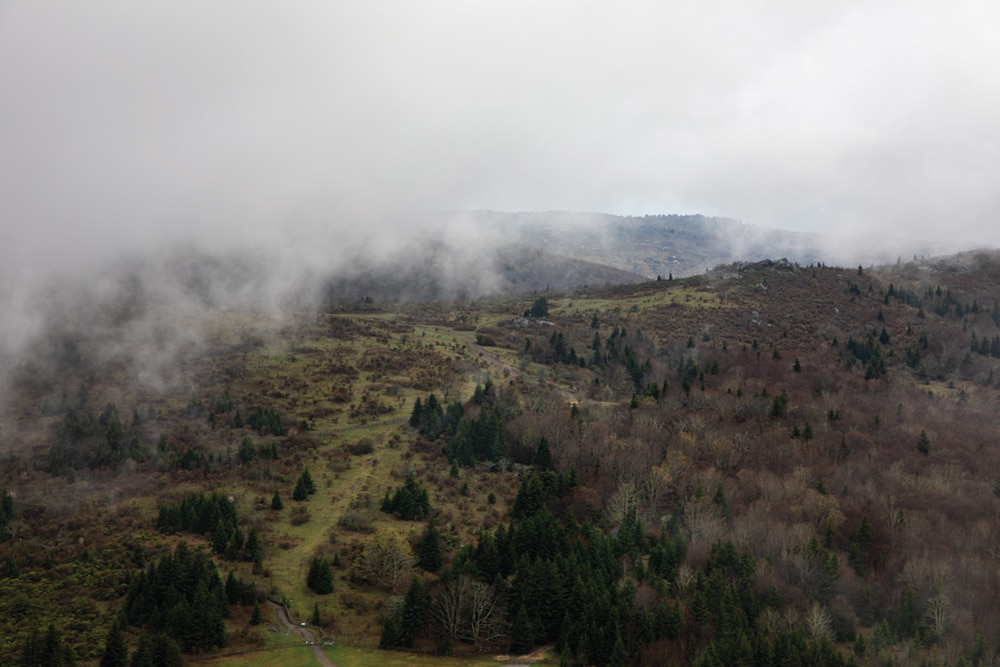
As a wilderness specialist – Do you have a favorite place within the wilderness you covered?
I really like Mount Rogers itself. It is popular since it’s the highest point in Virginia, so I feel like a good amount of people go up there. But I think that even though you’re seeing other humans, there’s something to, “I went to the top.” You feel good about it. You see these really interesting trees and the moss on the ground, and you feel like you’re somewhere totally different.
The other place I really like is Little Wilson Creek Trail. There’s only one trail in this wilderness that is hiker only. It’s really hard to access. When you get there, there’s not a lot of people and you feel like you’re really in the middle of nowhere in nature. There’s more solitude and peace within it.
What are your tips for navigating wilderness areas safely?
You want to go enjoy the outdoors and adventure but I feel like a lot of people I’ve met are lost. They didn’t have a map. They didn’t even know how to read a map. There’s no signal out here on your cell phone.
Figure out where you are on a map. I don’t know how many times I want to say map but… Know where you’re going. Make sure someone else knows where you’re at and you have a check in and check out time.
